Hey all! Real Farmer Jeff here.
Upside-down gardening sounds great in theory. Theoretically it can: save space, reduce pests, improve airflow, make harvesting easier, and keep produce cleaner by growing plants suspended off the ground.
It flips the script on traditional tomato growing and saves ground space. And yes, it can work. You can see in my photos above that tomatoes did indeed grow from the upside-down tomato grow bags I used. But after trying it and weighing the pros and cons, I’ve found it’s not worth the trouble in most situations. Unless you’re growing tomatoes on a balcony or trying to keep curious dogs out of your garden, the downsides make it hard to recommend.
Here are the three main downsides to upside-down tomato growing that I’ve found…
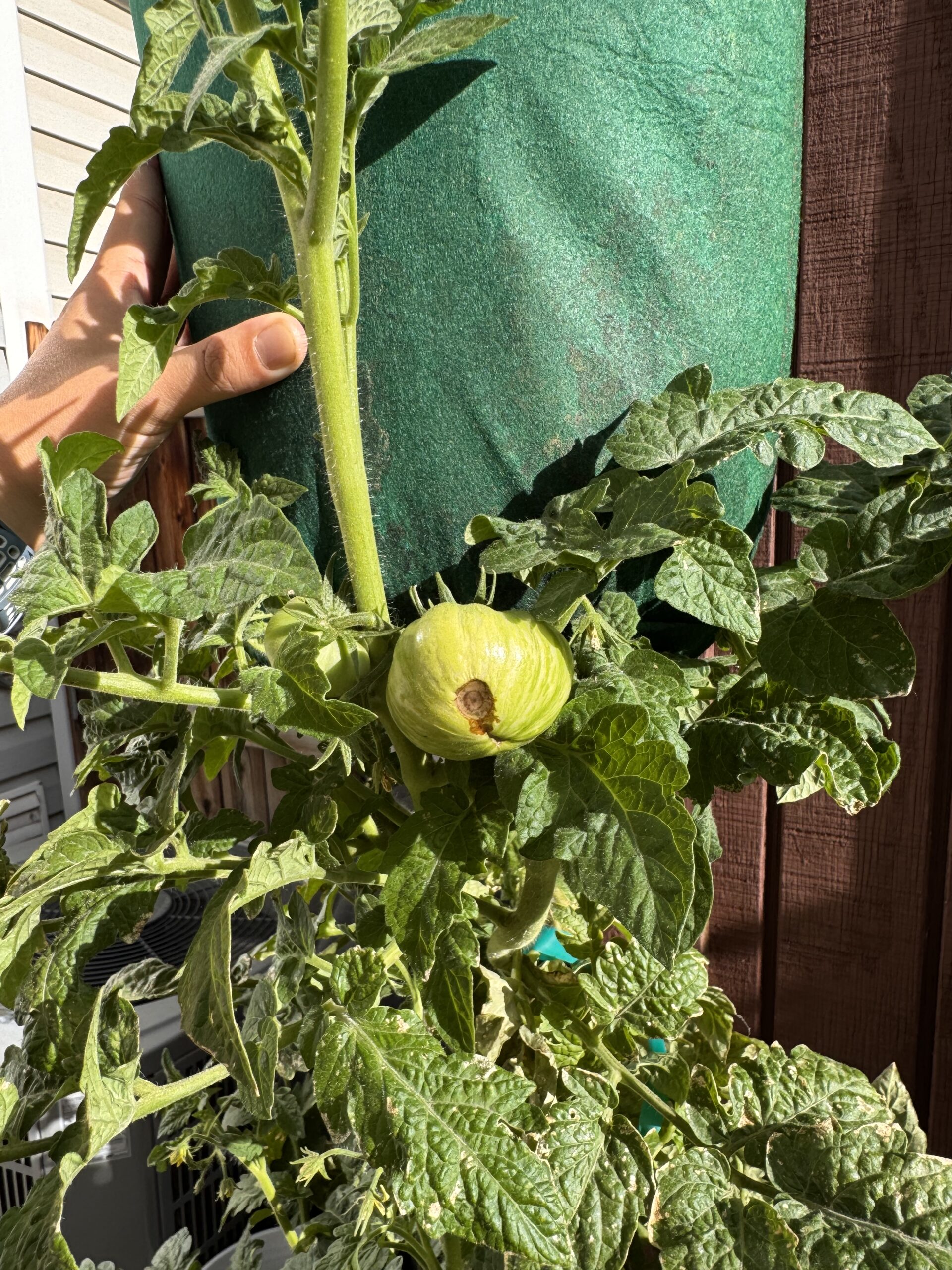
1. Blossom-End Rot
One of the biggest challenges with upside-down containers is how quickly the soil dries out. Without the insulation of the ground, the exposed grow bag or bucket heats up faster and loses moisture more quickly.
This issue gets worse if you try to maximize space by planting herbs, flowers, or other veggies in the top of the container. In this case, you would be splitting limited water between two root zones, and tomatoes don’t handle inconsistent watering well. In fact, that’s one of the leading causes of blossom end rot, when the bottom of the fruit turns dark and soft due to calcium uptake issues.
In most cases, blossom end rot does not signal a lack of calcium in the soil but rather indicates an inconsistent water supply. A few things that contribute to this problem include:
- Fast-drying soil
- Planting multiple things in one container
- Irregular watering
- Shallow root space for a heavy-feeding plant like tomatoes
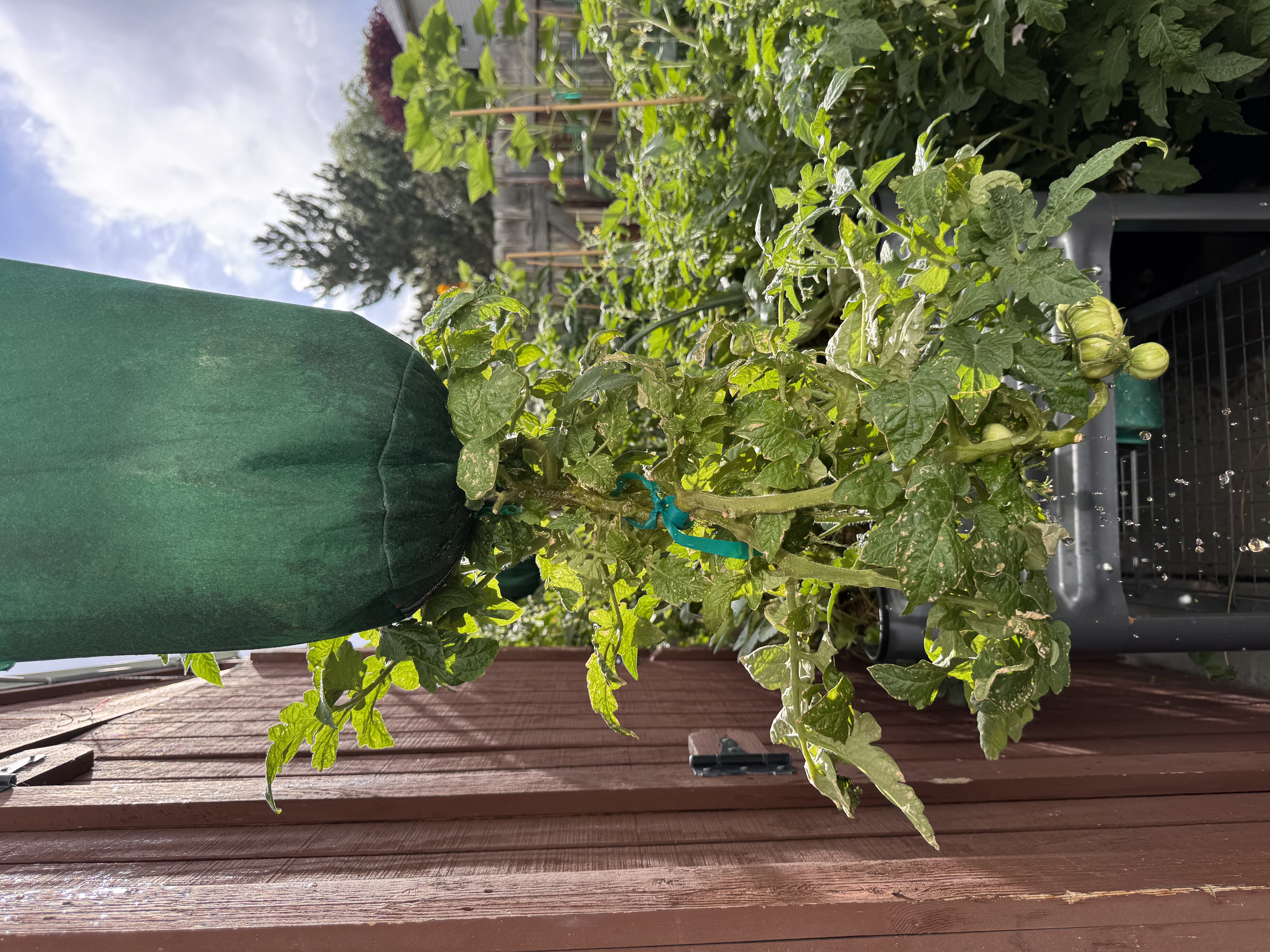
2. Lack of Support
In theory, gravity can replace the need for staking or trellising, but in practice, it may introduce a different kind of stress.
I’ve noticed, that the long tomato stems hanging out of a container are especially vulnerable to wind. A strong gust can whip them around and cause breakage. And if you’re growing large-fruited varieties, the weight can be too much for the plant to support as the stems curve upward toward the sun.
In other words, skipping the trellis isn’t a guaranteed win. Stems still may break and you will be more limited in what varieties you can grow.
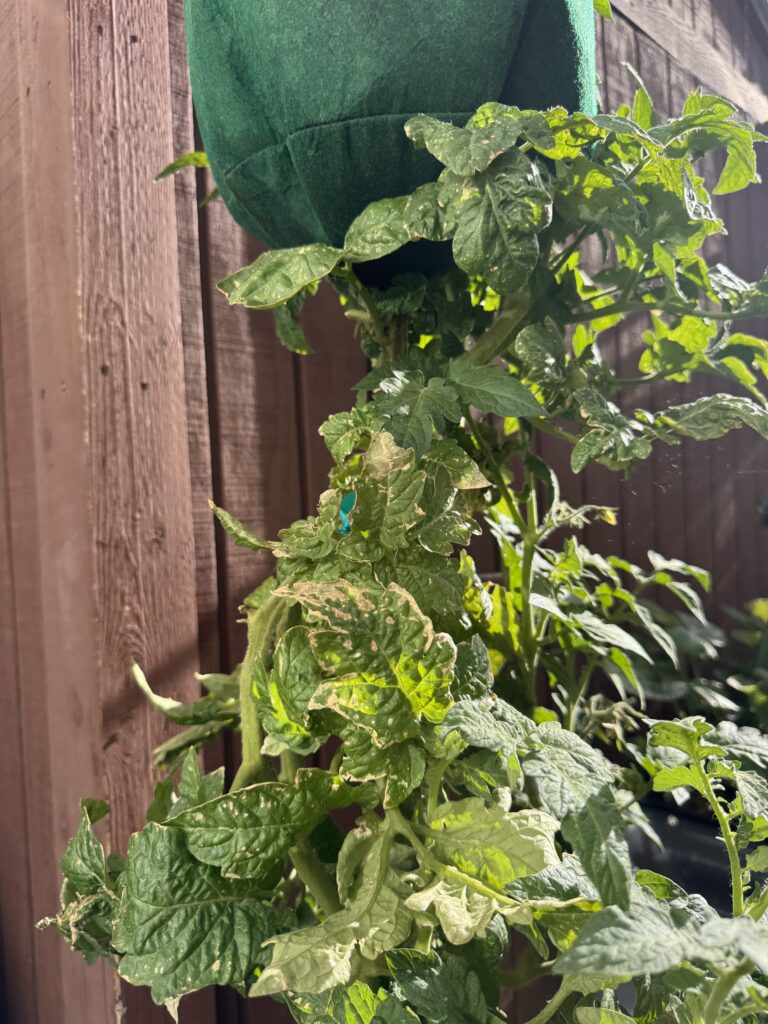
3. Higher Disease Risk
Finally, when you water from the top of a hanging planter, the excess water naturally drips straight down which often directly splashes on the leaves.
Over time, this repeated moisture on the foliage can lead to fungal problems like early blight or leaf spot, especially in humid conditions. In general, it is ideal to not get tomato leaves wet to avoid a variety of disease issues.
With traditional in-ground or potted tomatoes, it’s easy to water at the base and keep the foliage dry. That’s much harder when the plant is hanging directly under the water source.
So When Does Growing Tomatoes Upside Down Make Sense?
In my opinion, there are a couple of situations where upside-down tomatoes might work for you. If you’re working with a small balcony or need to keep plants out of reach of digging pets, the setup can be helpful. And if you’re growing a small-fruited or patio variety, you will likely have less issues.
However, the risk of watering issues, stem damage, and disease concerns make the traditional inground method a clear winner. I’d rather grow tomatoes in a large container or directly in the ground, where I have more control and fewer variables.
Still, growing tomatoes upside down is fun, I think it is worth it to try out on a small scale. And I’ve still seen some success from it myself! I have tomatoes growing!
Thanks for reading along, guys! If you enjoyed this blog post, check out my other gardening blog posts:
- How to Start a Garden on a Budget for Under $100
- Essential and Nice-to-Have Garden Products for Your Perfect Setup
- My Garden Setup: 3 Best Garden Containers for Every Gardener
- Understanding Garden Light and Shade: A Simple Guide
- How to Build a Homemade Trellis Using Cattle Panel
Follow me on social media for daily content and instructional videos about gardening!
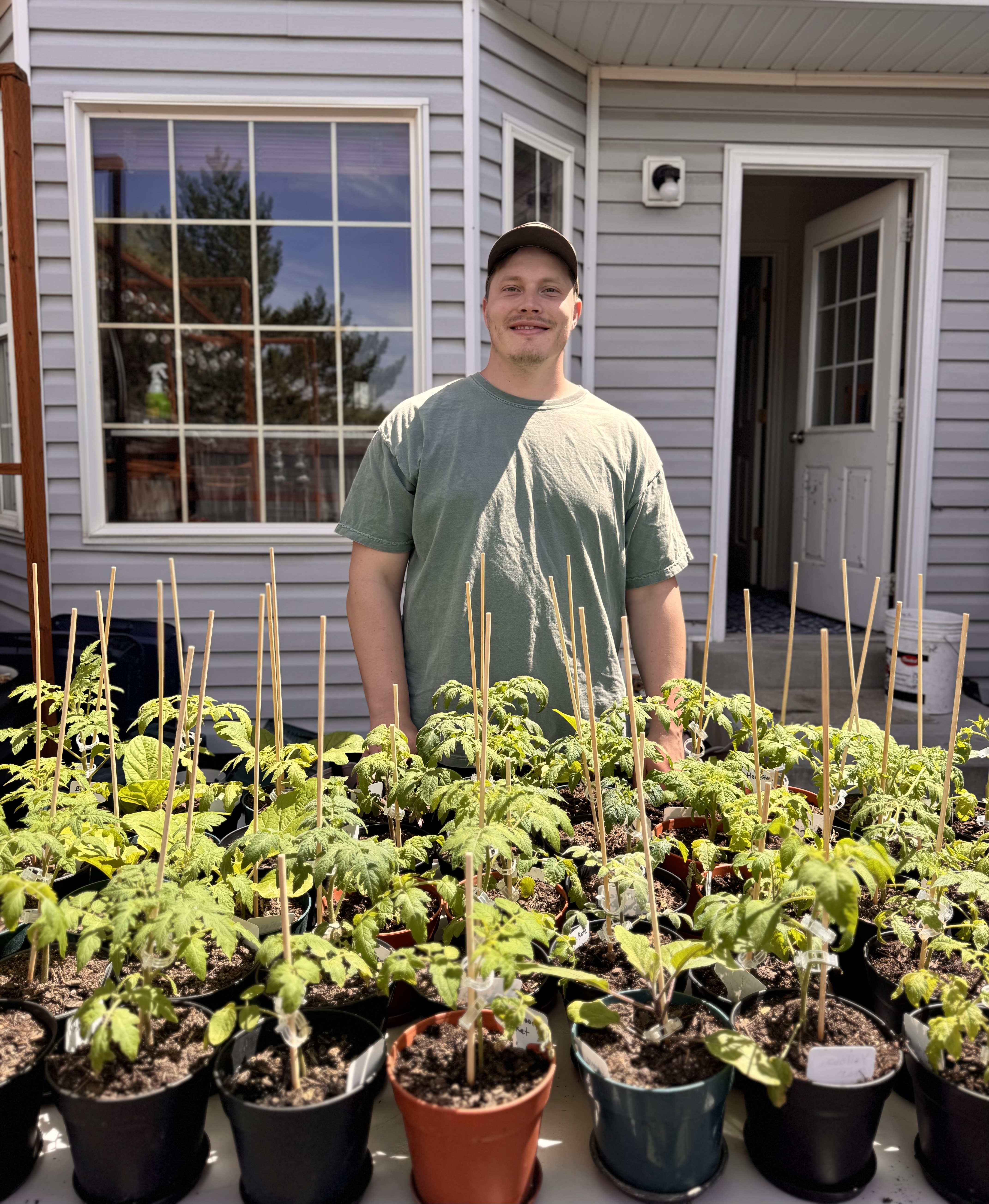

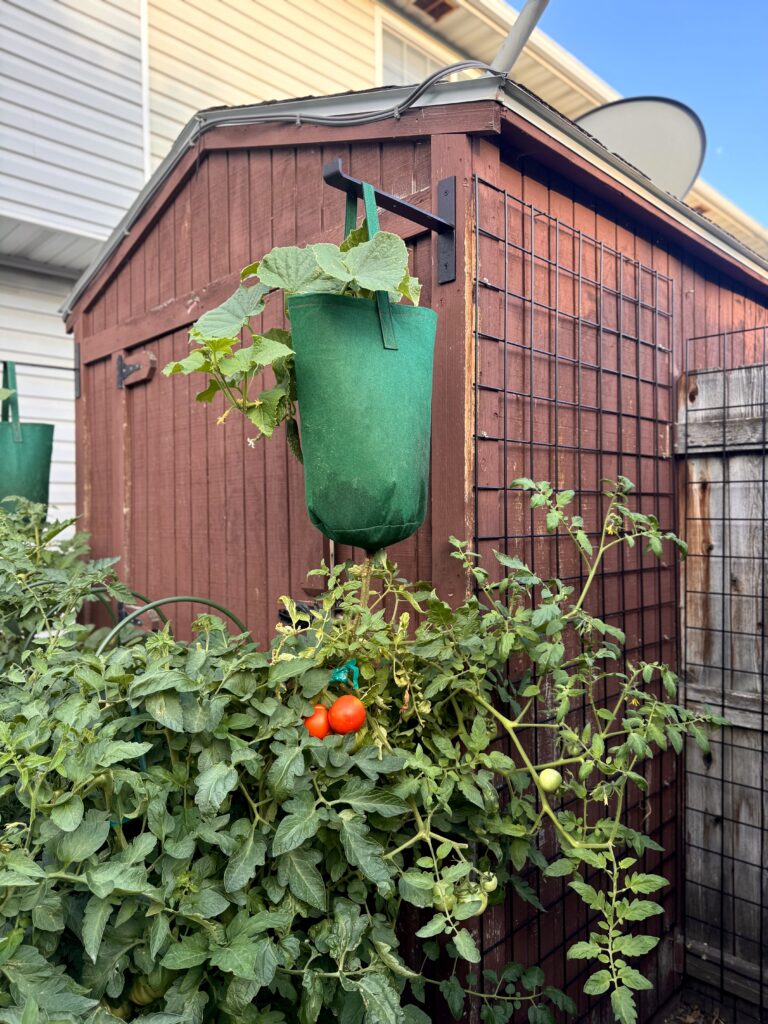
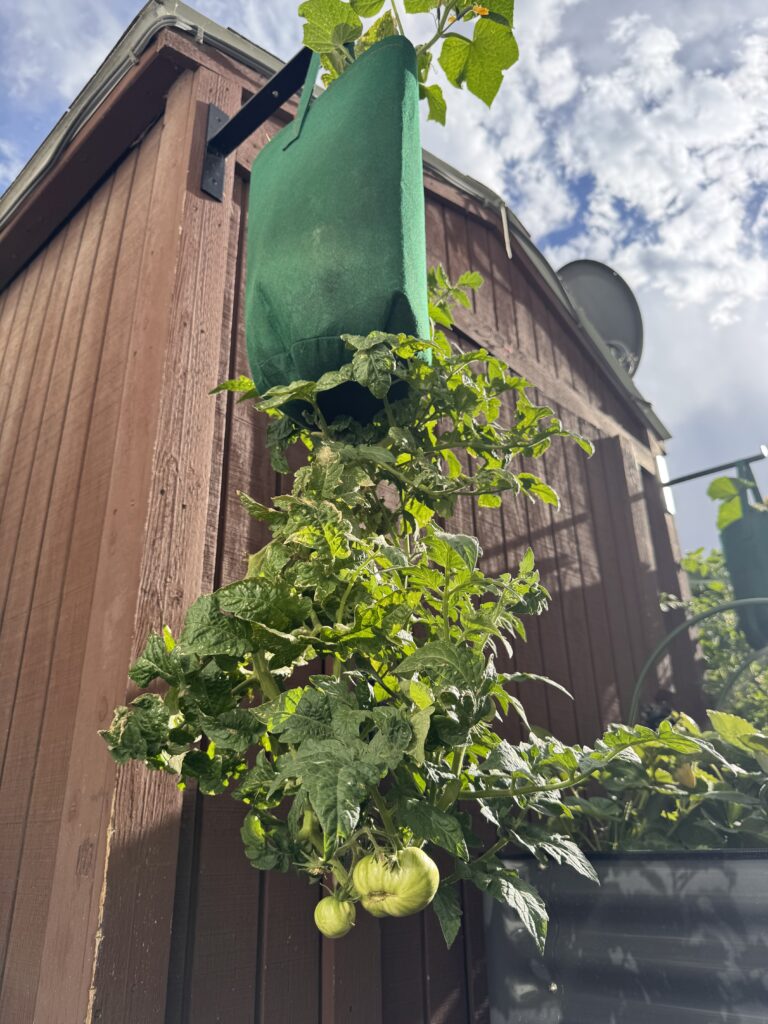



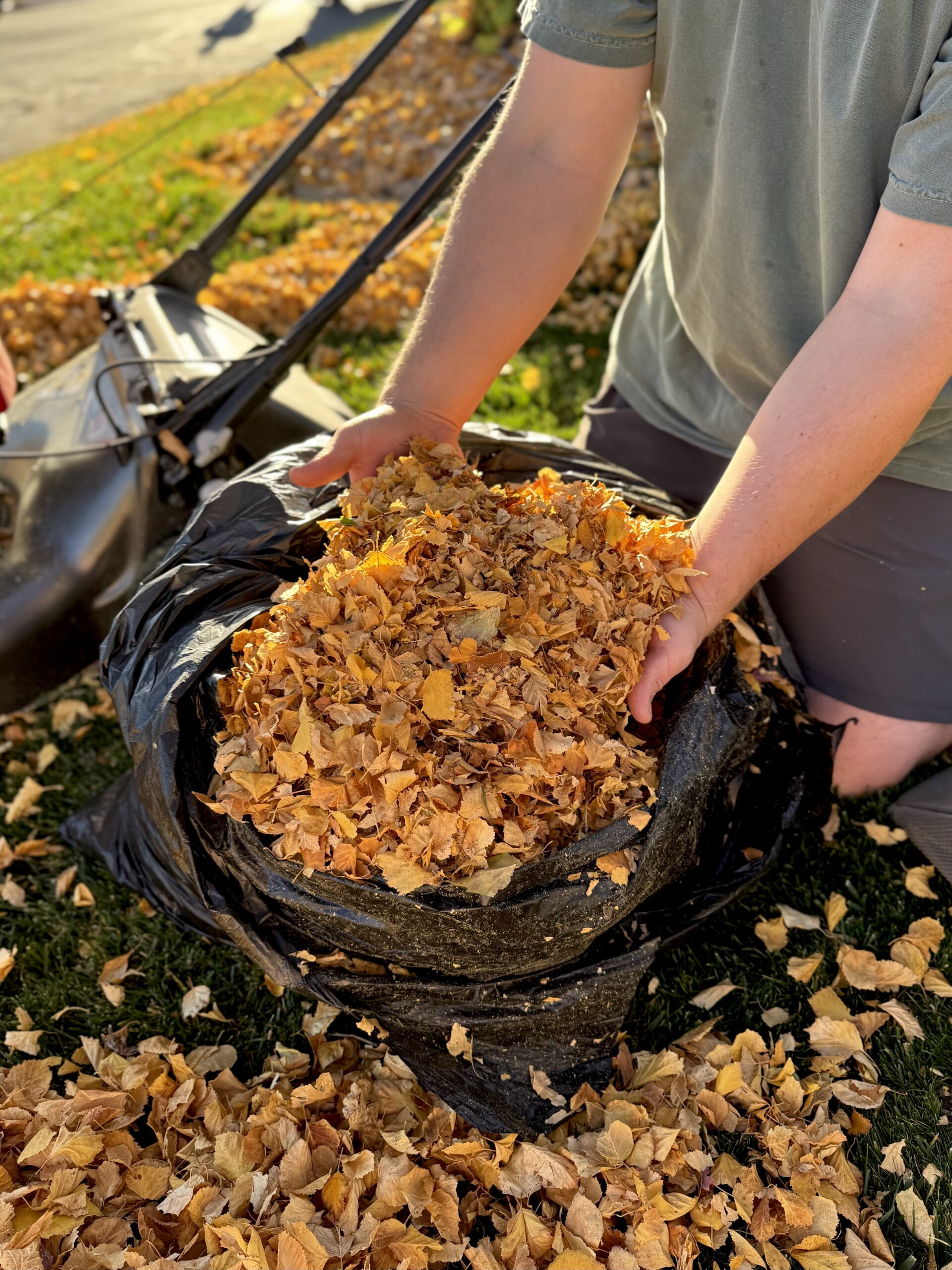
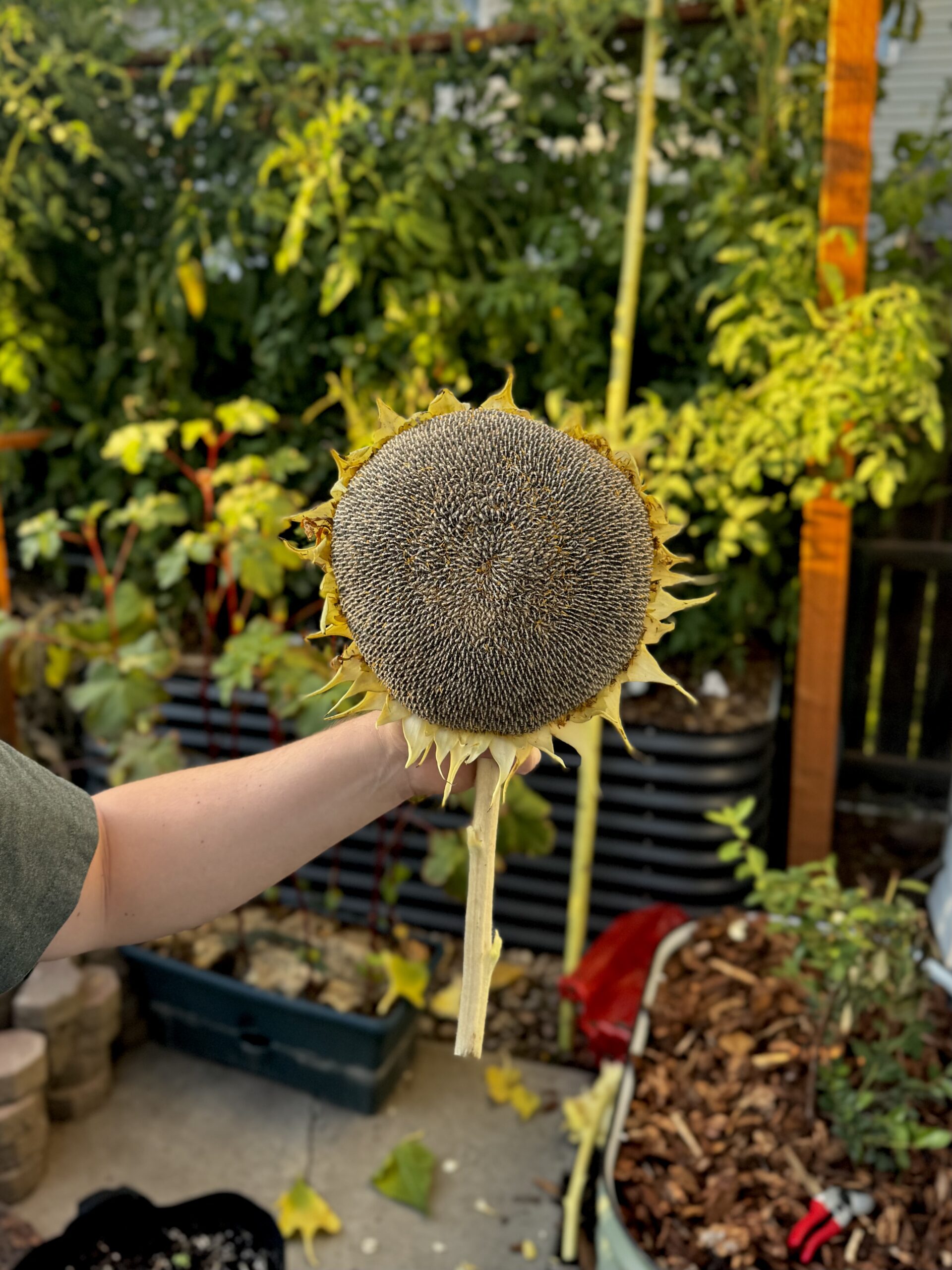

0 Comments